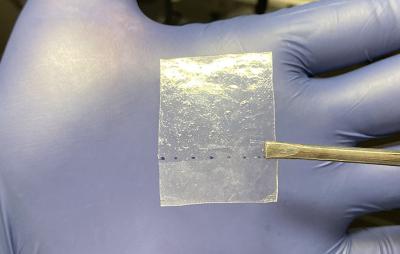Unique ionogel-based encapsulation could assist in creating impact-resistant, stable, and lead-safe perovskite modules
Researchers from University of North Carolina, North Carolina State University and Chinese Academy of Sciences have fabricated a mini perovskite solar module using a novel encapsulation technique based on the use of a self-healable, lead-adsorbing ionogel that prevents lead leakage and improves stability. The solar module has an area of 31.5cm2 and has a reported efficiency of 22.9%.
 Ionogel microstructure and lead adsorption mechanism. Image from article
Ionogel microstructure and lead adsorption mechanism. Image from article
The scientists explained that ionogel sealants were applied on the panel's front glass and between electrode and encapsulation glass, with the 100μm-thick inonogel being able to hold the shattered glass together even if the glass breaks. This is claimed to effectively suppress lead leakage from broken modules after hail test or compression by car wheels, and soaking in water for 45 days.






